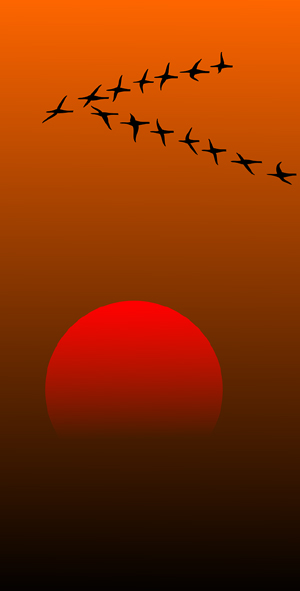One of the most common blackjack side bets in California card rooms is known as Buster
Blackjack (BBJ). I found 🔑 this documentation online. The player who makes the BBJ wager
wins if the dealer busts. The payout is then based 🔑 on the total number of cards in the
dealer’s busted hand. There are a lot of details to share, so 🔑 I’ve decided to break up
the discussion into the six-deck case and the two-deck case. This article covers card
counting 🔑 BBJ in a six-deck shoe game.
When I was asked about the vulnerability of BBJ
to card counting by one of 🔑 California’s largest banking corporations, I told them “not
very.” After all, the dealer needs low cards to generate hands with 🔑 lots of cards, he
needs mid-cards to give stiff totals of 15 and 16, and he needs high cards to 🔑 bust
hands. My intuition was both right and wrong: the difference is the pay table. There
are eight different pay 🔑 tables for BBJ that are in use or recommended. I investigated
all eight and found that five of these eight 🔑 are vulnerable and three are not. There is
also a progressive version of BBJ that I did not investigate at 🔑 all.
To begin with, I
am going to focus on one specific vulnerable pay table for BBJ. This is the most 🔑 common
pay table used by card rooms banked by one of the largest corporations in California.
The pay table is 🔑 as follows:
Dealer busts with 8+ cards pays 200-to-1.
Dealer busts
with 7 cards pays 100-to-1.
Dealer busts with 6 cards pays 30-to-1.
Dealer 🔑 busts with 5
cards pays 6-to-1.
Dealer busts with 4 cards pays 3-to-1.
Dealer busts with 3 cards
pays 1-to-1.
Otherwise, the player 🔑 loses the BBJ bet.
Here is the combinatorial
analysis for this pay table:
In particular,
The house edge is 4.724%.
The standard
deviation is 🔑 2.724.
The hit frequency is 28.576%.
The following table gives the effect
of removal (EOR) for each card. The EOR tells the 🔑 change in house edge by removing a
single card of that rank and re-computing the house edge. A positive EOR 🔑 means that the
edge moves towards the player side if the card is removed. A negative EOR means that
the 🔑 edge moves towards the house side if the card is removed.
Notice how much larger
the EOR is for the cards 🔑 A, 2, 3 than for any other card. With an abundance of these
three cards in the shoe, the dealer 🔑 is more likely to have hands with a large number of
cards. Whether the dealer’s hand busts or not is 🔑 beside the point to beat this pay
table: the primary goal is to have multi-card hands. Removing a single deuce 🔑 from a
six-deck shoe moves the edge towards the house by 0.77%. That’s big. Also, an Ace never
busts with 🔑 fewer than four cards. Removing an Ace from the six-deck shoe moves the edge
towards the house by 0.35%.
In the 🔑 table above, under the column Sys #1, I give tags
for the optimal card counting system #1. I simply use 🔑 the EOR’s to two decimal places,
scaled to make the index for a ten-valued card equal to 1. System #1 🔑 is not intended to
be used in practice. I include it only for purpose of determining an upper bound for
🔑 the profit possible by card counting BBJ.
Under the column Sys #2, I give a balanced
card counting system that can 🔑 be used in practice. System #2 shows the importance of
the cards A, 2, 3 to the card counter, with 🔑 deuces the most valuable card. The betting
correlation for this system is 0.977. For math geeks, this value is the 🔑 cosine of the
angle between the vectors given by system #1 and system #2. The closer this value is to
🔑 1, the more accurate the system.
To analyze these two systems, I simulated one hundred
million (100,000,000) six-deck shoes, with the 🔑 cut card placed at 260 cards (1 deck
from the end), for each system. The following table summarizes the results 🔑 of these
simulations:
Note that system #2 returns 95.0% of the profit that optimal system #1
returns.
These numbers indicate a moderate 🔑 vulnerability to advantage play. If the AP
uses system #2 against BBJ on a fast heads-up game where he gets 🔑 200 rounds per hour,
and the AP makes aR$100 wager on BBJ whenever he has the edge, then the AP 🔑 can
earnR$140 per hour on the BBJ side bet. The AP using system #2 will have an average
edge over 🔑 the house of 5.28% and will make the BBJ bet on 13.29% of his hands.
As I
mentioned at the start 🔑 of this post, there are eight different pay tables that I
considered for BBJ. The following table gives the combinatorial 🔑 analysis for another
pay table in common use:
In particular
The house edge is 4.691%.
The standard deviation
is 1.989.
The hit frequency is 🔑 28.576%.
Because a hand that contains an Ace does not
bust with fewer than four cards, the increase in payout for 🔑 busting with three cards
does not come into play with a hand that includes an Ace. Moreover, busting with four
🔑 or more cards has greatly reduced payouts. These two factors eliminate the
effectiveness of Aces to the card counter.
The following 🔑 table gives the EOR’s for this
pay table, along with a card counting system based on these EOR’s. In particular,
🔑 notice how much the EOR for the Ace has changed.
System #3 is a reasonable choice,
based on the EOR’s. The 🔑 betting correlation for this system is 0.973.
I was very
surprised at how different the tags for this pay table are 🔑 from those developed for the
previous pay table. This highlights the profound difference in strategy involved in
beating these two 🔑 pay tables. I know of no other blackjack side bet that has as
significant a strategy change for the AP 🔑 based purely on the pay table being used.
To
analyze this pay table and system #3, I ran a simulation of 🔑 twenty million (20,000,000)
six-deck shoes, with the cut card placed at 260 cards. The results were very
disappointing for the 🔑 AP:
The trigger count is +8.
The average edge is 2.33%.
The bet
frequency is 3.64%.
The number of units won per 100 hands 🔑 is 0.085.
These numbers
indicate a very low vulnerability to advantage play. If the AP uses system #3 on a fast
🔑 heads-up game where he gets 200 rounds per hour, and the AP makes aR$100 wager on BBJ
whenever he has 🔑 the edge, then the AP can earn aboutR$17 per hour.
There are two other
pay tables that are similar to this 🔑 one, paying 2, 2, 4 units respectively for busting
with 3, 4 or 5 cards. Simulations against these other pay 🔑 tables showed an even lower
vulnerability to card counting. Because of their low vulnerabilities, I will not
include these pay 🔑 tables in any further discussion of card counting BBJ.
The following
table summarizes the combinatorial analysis for six different pay tables 🔑 for BBJ:
The
following table gives the results of card counting BBJ against each of these six pay
tables.
For pay tables 🔑 #1, #2, #3, #4 and #5, I used system #2 with tags (-2, -3, -2,
0, 0, 0, 1, 1, 🔑 1, 1).
For pay table #6, I used system #3 with tags (1, -3, -2, 0, 1,
-1, 2, 1, 1, 🔑 0).
The only difference between pay tables #2, #3 and #4 is the top award.
For pay table #4, the AP 🔑 can earn about 0.737 units per 100 hands by card counting BBJ.
This is as good as it gets for 🔑 the AP using system #2 in a six-deck shoe game.
The
relative weakness of card counting using system #2 against pay 🔑 table #5 surprised me; I
thought it would do better. These results may be because system #2 was designed for 🔑 pay
table #2. A different count may work better against pay table #5. I’ll leave the
development and evaluation of 🔑 that card counting system as an exercise to the
reader.
Normally, at this point, I would simulate various penetration levels in 🔑 the
shoe to demonstrate the effectiveness of cut-card placement on game protection. I would
then make recommendations for protecting BBJ 🔑 that follow a standard game protection
model for card counting blackjack side bets. In this case, however, it is completely
🔑 clear how to protect BBJ.
I have only one game protection recommendation for BBJ, and
it’s easy:



